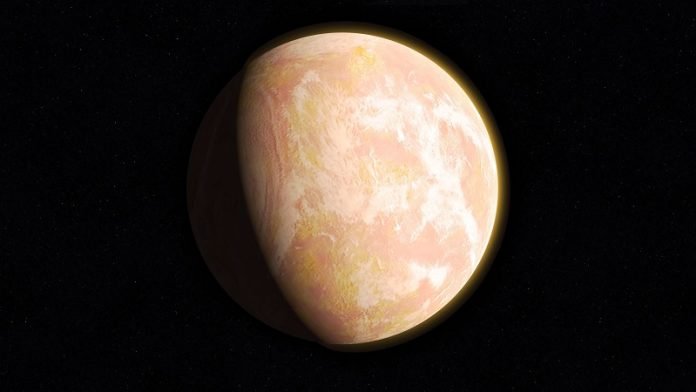
We’re inching closer and closer to reliably detecting biosignatures on distant planets.
Much of the focus is on determining which chemicals indicate life’s presence.
But life can also create free energy in a system, and excess energy can create chemical disequilibrium. That’s what happened on Earth when life got going. Could chemical disequilibrium be a biosignature?
When a system has excess energy, it manifests as a chemical equilibrium. Each planet is a system, and life can generate excess energy.
So, if we detect chemical equilibrium, are we detecting a biosignature? Are we detecting life? Maybe. Especially if we’re looking at an exoplanet very similar to early Earth.
New research tackles this question. Its title is “Inferring Chemical Disequilibrium Biosignatures for Proterozoic Earth-Like Exoplanets.” The lead author is Amber Young from the Department of Astronomy and Planetary Sciences at Northern Arizona University. The paper is in pre-print now.
“When attempting to infer if a distant world is inhabited, chemical disequilibrium is a potential indicator of life that has a long history of study in solar system planetary environments,” the authors write in their paper.
When methane (CH4) and oxygen (O2) are both present in an atmosphere, it’s an indication that life is at work.
That’s because, in an oxygen environment, methane only lasts about 10 years. Its presence indicates disequilibrium. For it to be present, it has to be continually replenished in amounts that only life can produce.
The Gibbs free energy concept tries to capture this idea. When a system reaches chemical equilibrium, the thermodynamic potential is minimized. The further away from chemical equilibrium a system is, the more Gibbs free energy there is.
“A primary metric for quantifying chemical disequilibrium involves calculating the difference in chemical
energy associated with an observed system and that system’s theoretical equilibrium state,” the authors explain. Researchers are exploring how they can use Gibbs free energy to understand worlds in our Solar System. More importantly, researchers are working to understand how it can be applied to Earth’s history.
This research focuses on the Proterozoic Eon, the third of Earth’s four eons. It ranged from 2.5 billion years ago to 541 million years ago and spans two critical events in Earth’s history.
Free oxygen appears in Earth’s atmosphere at the beginning of the Proterozoic, and the Proterozoic ends just prior to the appearance of complex life.
The stumbling block to using the Gibbs metric as a biosignature is that we don’t know what the observational uncertainties are when trying to understand it on Earth-like exoplanets.
In this research, Earth-like means “an ocean-bearing, Earth-sized world with surface pressures and temperatures similar to Earth and with an atmosphere dominated by N2, H2O, and CO2 with trace amounts of CH4 and varying levels of O2,” the authors explain.
Scientists understand quite a bit about Earth during the Proterozoic eon, though, of course, there are lots of unanswered questions.
In their effort to understand some of the observational uncertainties, the researchers modelled two different scenarios for Earth and one for Mars. Each scenario contains a different amount of free atmospheric energy.
They then explored how the atmospheres of each of these simulated planets would reflect light in different scenarios: high, medium, and low biosignature gases in the atmospheres.
The result was light spectra that we might observe in exoplanets’ atmospheres that mimic three different cases for Proterozoic Earth.
“Constraining the available Gibbs free energy is a promising characterization strategy that synergizes well
with established techniques for biosignature gas detection,” the authors conclude. But to realize that potential, we need better telescopes with better signal-to-noise (SNR) performance. And those, hopefully, are on the way.
“For a 6 m-class space telescope with noise properties modelled on the LUVOIR-B concept, the high-SNR cases explored here could be achieved for an Earth-like target around a solar host at distances of 5—7 pc (16 to 23 light-years) with an investment of 2—4 weeks of observing time,” the authors explain.
While that might sound like a lot of observing time, it’s in line with expected target observing times with the HabEx telescope concept. And a potential Proterozoic Earth-like exoplanet is a high-value target worthy of that much dedicated observation time. Is there something else space telescopes should prioritize? Not likely.
“From an observational perspective, characterizing the CH4 and O2 abundances is essential to inferring
the atmospheric chemical disequilibrium signal of Earth analogs over most of its evolutionary history,” the authors write.
Though we tend to normalize everything we see around us, Earth’s current state is hardly “normal.” Earth was much different for most of its history. It makes sense to look for planets that are similar to how Earth was during the Proterozoic.
The Proterozoic lasted for two billion years, and life actively shaped its atmosphere during the entire period. If we’re fortunate enough to ever discover another life-supporting exoplanet, then purely by chance alone, it’s likely to look more like the Proterozoic Earth than the modern Earth.
Written by Evan Gough/Universe Today.



